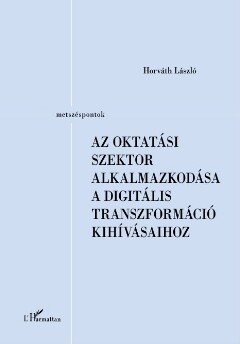Oldal 168 [168]
SUMMARY
(ANGOL NYELVŰ ÖSSZEFOGLALÓ)
Digital transformation (DT) ‘is not a simple phenomenon but a complex range of
continually unfolding, interrelated, and often unpredictable developments’ (OECD,
2019e, p. 29), a process through which organisations embed new, ubiquitous dig¬
ital technologies in order to sustain their competitive advantage by transforming
multiple aspects of their operation (e.g. business model, customer experience,
administration) and having an impact on people (skills, organizational culture)
and networks, including the entire value system (Ismail és mtsai., 2017, p.6). DT is
identified as one of the key megatrends besides globalization, demographic trends
and migration having considerable implications for skills utilization (OECD,
2019d). Skills utilization focuses on the effective application of skills in the work¬
place considering the complex interplay of learning providers and employers and
a range of human resource management practices, matching the supply of and
demand for skills (Scottish Government Social Research, 2008). As DT involves
multiple and diverse areas (societies, industries, organizations, individuals etc.)
(Ismail et al., 2017), we are applying a systems-thinking approach, considering
a specific skill ecosystem (the teaching profession) — ‘a self-sustaining network of
workforce skills and knowledge in an industry or a region’ (Windsor & Alcorso, 2008,
p: 5) —, to investigate the impact and challenges of DT. The education sector is
particularly interesting in this regard as it is assaulted on many fronts: Schools
must deal with ‘digital native’ incoming students (whose social environment are
affected by DT) and ‘digital native’ new entrants from initial teacher education.
On the other side, there is a constant socio-economical pressure from the labour
market for schools to prepare children to be successful in a digital world requiring
not only specific or vocation-related skills but new, transversal, general skills as
well. These pressures can be felt in initial teacher education and continuous pro¬
fessional development courses, as well as schools, are expecting teachers to be able
to cope with these challenges. As these changes unfolding rapidly, numerous new
entrants to the wider education sector emerged providing solutions to these needs
(e.g., summer schools providing programming skills to students, Massive Open
Online Courses (MOOC) that are frequented by teachers, alternative pedagogical
solutions that are focusing on the development of entrepreneurial competencies,
online professional learning communities for teachers on a specific topic etc.)
We have employed a mixed method research strategy with a multiphase design.
The research project contributed to the broad research question: What character¬

